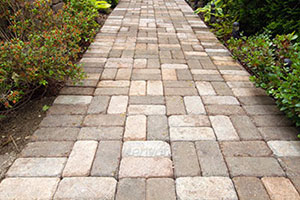Design Patterns of Concrete Pavers

The designers typically select the concrete paver patterns that they can readily harmonize with the rest of the area. You can combine two paver colors to help you provide an interesting detail for large areas. The pavers also come with the blended colors if you want to play around with the design some more.
The concrete paver patterns are highly similar to those that you can find in the brick and colored concrete products. In this regard, you may take note of variations in shades. The variations in shades may result from the slight discrepancies in the main materials used and the dye lots. You may install concrete pavers from numerous pallets at a time.
The following are some of the concrete paver patterns that you may want to consider:
If you want to come up with personalized designs for your concrete pavers, you need to take note of the following tips and hints:
When you are using the concrete paver patterns, you should work on the attention or emphasis by creating different kinds of laying styles. Laying the concrete pavers using a 45 degree angle with respect to the lines of the house will help you draw the general attention to that spot. The angle makes the space appear smaller than when the pattern is laid using a 90 degree angle.
1.Overall formality of the design.
When choosing a paver pattern, keep in mind the emphasis or attention created by certain types of laying styles. The general rule of thumb is that laying pavers or tiles at a 45 degree angle to the lines of your house will draw attention to the area. This angle also has the effect of making the space look smaller than if is it was laid at 90 degree angles to the line of your home.
2. Cost considerations.
Every time a paver has to be cut, the laying costs will increase dramatically both for the time involved and the wastage of materials.
3. Hints and Tips
Paver Patterns

The 45 degree herringbone pattern is becoming increasingly popular in feature outdoor living space as the pattern works well with stand-out borders and edging. It is a busy pattern to choose so it will definitely be noticed. Whereas straight or 90 degree herringbone has the ability to blend into existing paving and have a natural flow to other sections of the house.
Stretcher Bond

This side-by-side style of paving is the plainest of all paving patterns, but it has the illusional effect of seeming narrower or wider depending on the direction in which it is laid. Stretcher Bond is good if you want to make a path look longer. If you position the pavers so that their length runs along the length of the path it will look longer. On the other hand if you want a path to look wider in a Stretch Bond pattern, lay them perpendicular to the length of the path.
Stretcher bond patterns are good for a less formal design where it is not desirable for the eye to be strongly led. The pavers tend to look more rectangular and it is also the best pattern for coping with gentle curves. Again, choosing the right paver pattern size will minimize cutting but wastage will still be higher – at least 7%.
Basket Weave

Basket Weave is best suited to old world English landscaping themes. This style of paving can be effective if you are using recycled or old pavers as it brings out the rustic charm of cracked old textures.
A regular grid pattern looks great in formal designs and will have the least wastage (as low as 5%) as long as the designer has had the good senseto create paths and spaces sized in multiples of the selected paver’s width. A one meter wide path is hardly commonsense for a 400mm x 400mm paver.
Diamond paver patterns can look great but will require a great deal of skill and experience on the part of the contractor – many may just not be interested in the job. Wastage increases substantially at 12% and up.
